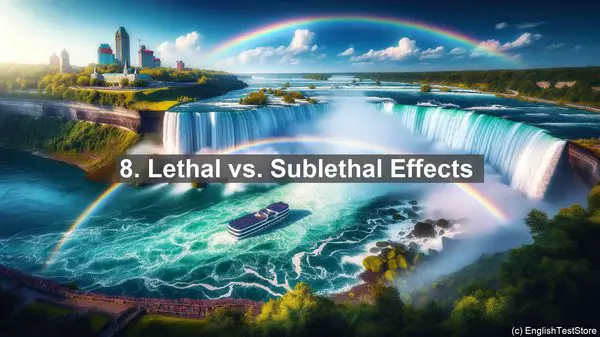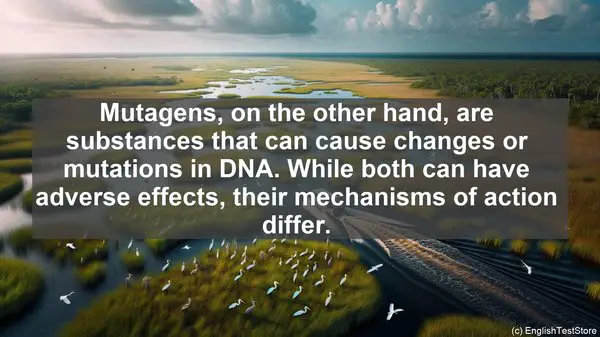Introduction
Welcome to today’s lesson on ecotoxicology. In this lesson, we’ll be discussing the top 10 commonly confused words in this field. Understanding these terms is crucial for accurate communication and research in ecotoxicology.
1. Bioaccumulation vs. Biomagnification
Bioaccumulation refers to the gradual accumulation of a substance in an organism over time. On the other hand, biomagnification is the process where the concentration of a substance increases at higher levels of the food chain. While both involve the increase of a substance, the key difference lies in the scale: bioaccumulation occurs within an organism, while biomagnification happens across different trophic levels.
2. Toxicity vs. Hazard
Toxicity refers to the inherent ability of a substance to cause harm. It is a measure of the substance’s potential to cause adverse effects. On the other hand, hazard refers to the potential for a substance to cause harm in a specific situation or under certain conditions. While a substance may have inherent toxicity, it may not always pose a hazard if exposure is limited or controlled.
3. Persistence vs. Degradability
Persistence refers to the ability of a substance to remain in the environment for an extended period without undergoing significant degradation. Degradability, on the other hand, refers to the ability of a substance to break down or decompose over time. While a persistent substance may not readily degrade, a degradable substance can break down into simpler components.
4. Acute vs. Chronic Exposure
Acute exposure refers to a high-level, short-term exposure to a substance. It often results in immediate or rapid effects. Chronic exposure, on the other hand, refers to long-term, low-level exposure to a substance. The effects of chronic exposure may not be immediately apparent but can manifest over time.

5. Risk vs. Hazard Assessment
Risk assessment involves the evaluation of the potential for harm associated with a substance or activity. It takes into account factors such as exposure, toxicity, and the likelihood of adverse effects. Hazard assessment, on the other hand, focuses on identifying and characterizing the inherent properties of a substance that could pose a risk. While hazard assessment informs risk assessment, they are distinct processes.
6. Endocrine Disruptors vs. Mutagens
Endocrine disruptors are substances that can interfere with the normal functioning of the endocrine system, which regulates hormones. They can have wide-ranging effects on development, reproduction, and other biological processes. Mutagens, on the other hand, are substances that can cause changes or mutations in DNA. While both can have adverse effects, their mechanisms of action differ.

7. Point Source vs. Non-Point Source Pollution
Point source pollution refers to pollution that originates from a single, identifiable source. For example, a factory discharging effluents into a river. Non-point source pollution, on the other hand, refers to pollution that comes from diffuse sources, making it challenging to pinpoint the exact origin. An example would be runoff from agricultural fields, carrying pesticides and fertilizers.
8. Lethal vs. Sublethal Effects
Lethal effects refer to those that cause death in organisms. They are often the most visible and immediate consequences of exposure to a toxic substance. Sublethal effects, on the other hand, refer to non-lethal but still harmful effects. These can include reduced growth, impaired reproduction, or behavioral changes.
9. Bioavailability vs. Bioaccessibility
Bioavailability refers to the proportion of a substance that is absorbed and available for biological interactions. It takes into account factors such as solubility and the form of the substance. Bioaccessibility, on the other hand, refers to the proportion of a substance that can be released and become available for absorption. It is influenced by factors such as the substance’s association with soil or sediment particles.
10. Ecosystem Health vs. Ecological Risk
Ecosystem health refers to the overall condition and functioning of an ecosystem. It takes into account factors such as biodiversity, nutrient cycling, and energy flow. Ecological risk, on the other hand, focuses on the potential for adverse effects on the ecosystem due to human activities or natural events. While ecosystem health is a broader concept, ecological risk assessment helps identify and mitigate specific risks.
